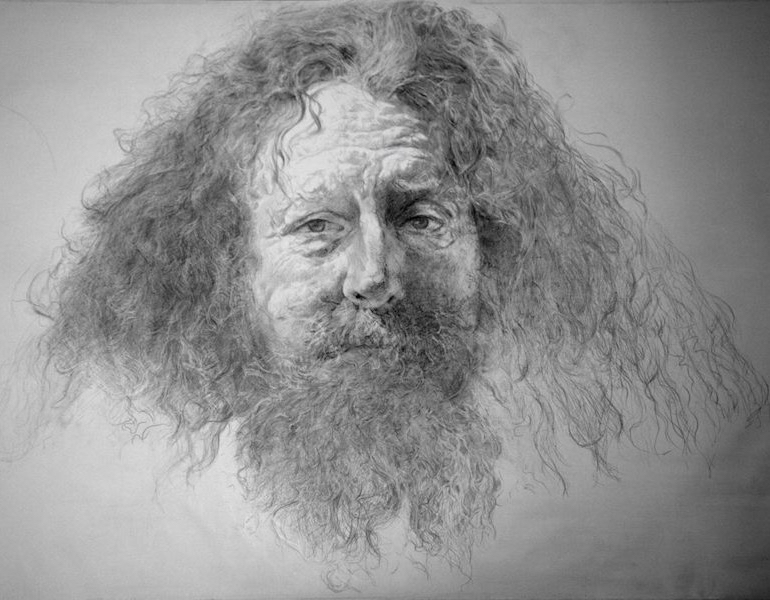 [1]
[1]Silverpoint is just one of several metal points that fit into the bigger category of metalpoint, but most artists pick silver to work with because, unlike the other metals, it tarnishes to a very special, rich, warm tone not possible to achieve in any other way. Therefore, the Old Masters’ art technique is most often referred to as silverpoint, although the artist or art historian might be more specific and describe the work as metalpoint done with silver, gold, copper, lead, or iron. The only other metal that tarnishes is copper, but it changes unpredictably to green and reddish hues.
A silverpoint or metalpoint stylus looks like a mechanical pencil. It consists of a small piece of metal resembling a piece of graphite in shape — thin, straight, and placed into a holder. It makes marks that at first look like graphite, but the marks need a specially prepared surface to appear, as they will not show up on regular paper.
Silverpoint/metalpoint was the Old Masters’ pencil before there were graphite pencils. These artists used the medium for delicate, detailed work, and for cartoons under frescos. Today, contemporary artists are exploring the medium because it is now easy to use, in any size and in many subjects, including portrait and still life.
1. Silverpoint is simple. If you can draw with a pencil, you can do silverpoint.
2. Can you erase silverpoint? Yes! Erasing is easy. The misconception that silverpoint isn’t erasable is one many artists have, and it sometimes prevents them from trying the medium. Very little silver is needed to do a complete work of art. Erasing the silver is like erasing a line of graphite — the amount lost is not worth mentioning. Bonus: Any eraser will do.
3. The secret to success is the surface. Silverpoint marks are not visible on paper, but they appear like magic on the right surface. The surface needs to have a special combination of chemicals. When this medium originated, this formula was difficult to acquire, difficult to prepare, and difficult to work on. Now, commercial gesso or flat acrylic house paint applied to any size illustration board or wood panel is easy to prepare, easy to erase, easy to draw on.
4. Properly prepared surfaces are available at most art stores, as are clay-coated papers, but some of the papers are too fragile for silverpoint, so avoid erasing. Conveniently, art stores sell prepared surfaces, and any surface gesso-prepared for painting will do. I don’t recommend the clay-coated papers sold for silverpoint, however, because the coating is sprayed on very thinly and an eraser can abrade the surface, exposing the paper underneath. When this happens, the silver marks will no longer show up; so you can take off a mistake but can’t put a correct mark in its place.
5. The old masters struggled creating mysterious gesso formulas to make metalpoint (silver, lead, copper, gold) marks appear on parchment, wood, or fresco walls, but for your surface any commercial gesso or even flat latex house paint can work on any sized watercolor paper, illustration board, or canvas.
6. Silverpoint as a medium is easy to access. Metal points of silver, lead, copper, and gold, and their stylus holders, are affordable and available online. But any sterling spoon, lead nail, copper wire, or gold trinket will work. Simply use the tip of the item and start drawing on your surface!
7. Use any of the following to add color to silverpoint: colored pencil, pastel, pan pastel, egg tempera, gouache, watercolor, mixed media, or oil paint.
Try a portrait, figure, landscape, still life, real, abstract, imagined. Any subject, any size, any color is possible!
Register for Sherry Camhy’s October 2018 workshop to learn how to draw with silverpoint at www.theartstudentsleague.org[2]
- [Image]: https://asllinea.org/wp-content/uploads/2018/06/metalpoint-silverpoint-Sherry-Camhy-Moses-drawing-1376x1032-1.jpg
- www.theartstudentsleague.org: http://www.theartstudentsleague.org/